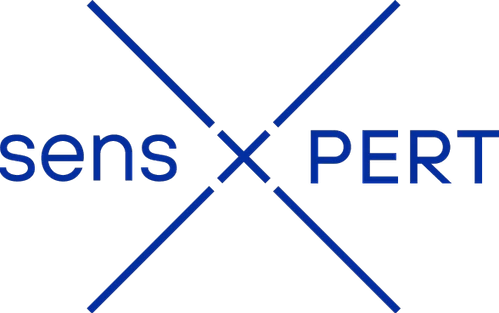
29.03.2021 by Jigyasa Sakhuja, Michaela Lang
From Smart Data to Artificial Intelligence
What is the difference between Machine Learning and Artificial Intelligence? Learn about their core components and explore how Machine Learning is applied at NETZSCH Analyzing & Testing and sensXPERT®.
After our introduction to the world of Big Data and Data Science in general, we would like to dive deeper into Machine Learning and Artificial Intelligence. Since these terms are very familiar nowadays, but not everyone knows their basics, we explore in more detail to explain their core components.
Artificial Intelligence vs. Machine Learning
Simply summarized, Artificial Intelligence offers the possibility to reproduce human brainpower in machines. It generates knowledge based on experience by extracting required information out of massive sets of existing machine data. Artificial intelligence describes a subsection of computer science that focuses on transferring human thinking and decisions to machine level. This idea is nothing new and even appeared several decades ago. Since we now also have the prerequisites in the area of hardware performance, it is possible for us to implement this theory in reality.
The field of Machine Learning is a subpart of Artificial Intelligence. Machine learning methods recognize dependencies and patterns within a data set automatically without being explicitly programmed. After a training phase in which these correlations are learned, the gained knowledge is generalized and can be applied to new data sets to generate predictions. For the training phase, various mathematical algorithms can be implemented.
The following approaches are the best known:
Supervised Learning: For this method, a large data set with a desired target variable is presented to the Machine Learning algorithm. With the help of the example data, the algorithm identifies the correlation that leads to the target variable. With this supervised approach, the algorithm can apply the trained logic also to new similar data and make predictions based on the unknown data set. Examples of supervised learning applications are E-mail spam detection or image recognition methods.
Unsupervised Learning: In this type of learning, no target variable is known. An enormous set of data is provided to the algorithm without more information about the target variable. The goal is to identify a structure within the data set independently. This method is frequently utilized to extract clusters within a data set and identify diverse classes, which possess certain properties. Examples of unsupervised applications are recommendation systems, used in many industries in order to give suggestions to the user based on their respective interest. This is what you can even face during your online shopping in everyday life.
Reinforcement Learning: In this type of learning technique, the Machine Learning algorithms teach an agent to be able to learn in an interactive manner using trial and error feedback. The feedback comes with its own actions and experiences. Thus, the agent learns what action is the best for a certain situation by getting feedback rewards. It reinforces its knowledge by getting positive experience and learns about wrong decisions by being punished – in a symbolic sense. Reinforcement Learning can be used in many applications, among other things, for robotics of industrial automation or driver assistance systems.
Machine Learning in Industry and Production
So far, we focused on the methods of Machine Learning, but it is equally important to know how these methods bring advantages to industry and production to automate and monitor processes.
In the field of process control, Machine Learning can even help give real-time insights into the behavior of a material being processed for the manufacturing of a certain product. Combined with fundamental knowledge of materials science, Machine Learning algorithms can be applied to optimize the manufacturing process itself. A sensor integrated in the injection mold measures relevant material properties that describe the material behavior during production. Machine Learning can be used to predict this behavior before it even occurs in the production process. If influencing factors such as temperature, humidity, etc., change during production, the Machine Learning algorithm can adapt to new conditions even over time without manual interaction. This enables flexible insight into a running process as well as real-time quality assurance and can help minimize defective products.

How we apply Machine Learning at NETZSCH
At NETZSCH Analyzing & Testing, we are in the process of embedding Machine Learning knowledge in the field of process control within the scope of the sensXPERT® solution. By analyzing the material properties and behavior, optimal Curing (Crosslinking Reactions)Literally translated, the term “crosslinking“ means “cross networking”. In the chemical context, it is used for reactions in which molecules are linked together by introducing covalent bonds and forming three-dimensional networks.curing of a material can be predicted. With the use of advanced analytics, various industries can benefit from this solution by increasing production efficiency. With sensXPERT®, the manufacturers can optimize their process and reduce scrap rates by bringing materials science and Machine Learning algorithms together.
As our Big Data series ends with this article, we want to summarize what we finally know about this topic. We discussed Big Data in general, its uses, the impacts of Big Data in the industries, and we explained the benefits that can be achieved by its applications. We introduced the term Data Science and described various data analytics and finally with this article, we learned the basics of Machine Learning and Artificial Intelligence. If you are still curious about how we apply Machine Learning methods and if you are especially interested in getting more information about the sensXPERT® solution, you can find more details on the sensXPERT® website.
Sources
- James, G., Witten, D., Hastie, T. & Tibshirani, R. (2013). An Introduction to Statistical Learning. Springer.
- Brownlee, J. (2020, 20. August). Supervised and Unsupervised Machine Learning Algorithms. Machine Learning Mastery. https://machinelearningmastery.com/supervised-and-unsupervised-machine-learning-algorithms/
- Iriondo, R. (2021, 28. Januar). Machine Learning (ML) vs. Artificial Intelligence (AI) — Crucial Differences. Medium. https://medium.com/towards-artificial-intelligence/differences-between-ai-and-machine-learning-and-why-it-matters-1255b182fc6
- Serokell. (2020, 23. November). Artificial Intelligence vs. Machine Learning vs. Deep Learning: What’s the Difference. Medium. https://medium.com/ai-in-plain-english/artificial-intelligence-vs-machine-learning-vs-deep-learning-whats-the-difference-dccce18efe7f
- Litzel, N. (2019, 19. März). Was ist Machine Learning? BigData-Insider. https://www.bigdata-insider.de/was-ist-machine-learning-a-592092/#:%7E:text=Machine%20Learning%20ist%20ein%20Teilbereich,k%C3%BCnstliches%20Wissen%20aus%20Erfahrungen%20generiert.